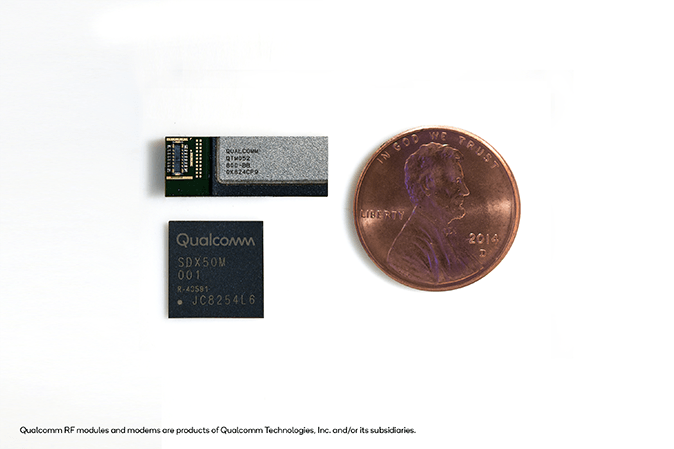
Qualcomm has unveiled the world’s first fully-integrated 5G NR mmWave and sub-6GHz RF modules for smartphones.
The Qualcomm QTM052 antenna and QPM56xx RF module are designed to work with the Snapdragon X50’s 5G modem, delivering high bandwidth capabilities in a compact size.
The development of these modules, according to Qualcomm is a major milestone for the smartphone industry.
“Qualcomm Technologies’ early investment in 5G has allowed us to deliver to the industry a working mobile mmWave solution that was previously thought unattainable, as well as a fully-integrated sub-6GHz RF solution,” said Qualcomm president Cristiano Amon.

“Now, these type of modem-to-antenna solutions, spanning both mmWave and sub-6 spectrum bands, make mobile 5G networks and devices, especially smartphones, ready for large-scale commercialisation.”
The mmWave antenna supports beamforming, steering, and tracking technologies, improving the range and reliability of mmWave signals.
Qualcomm said its new modules are now sampling to customers, meaning they could be available in the next generation of commercial flagship smartphones.
To date, mmWave signals have not been used for mobile wireless communications due to the many technical and design challenges they pose, which impact nearly every aspect of device engineering, including materials, form-factor, industrial design, thermals, and regulatory requirements for radiated power. As such, many in the mobile industry considered mmWave highly impractical for mobile devices and networks, and thus unlikely to materialize.
The QTM052 mmWave antenna modules work in tandem with the Snapdragon X50 5G modem, as a comprehensive system, to help overcome the formidable challenges associated with mmWave. They support advanced beam forming, beam steering, and beam tracking technologies, drastically improving the range and reliability of mmWave signals. They feature an integrated 5G NR radio transceiver, power management IC, RF front-end components and phased antenna array.
While mmWave is best suited for providing 5G coverage in dense urban areas and crowded indoor environments, broad 5G NR coverage will be achieved in sub-6 GHz spectrum bands.




